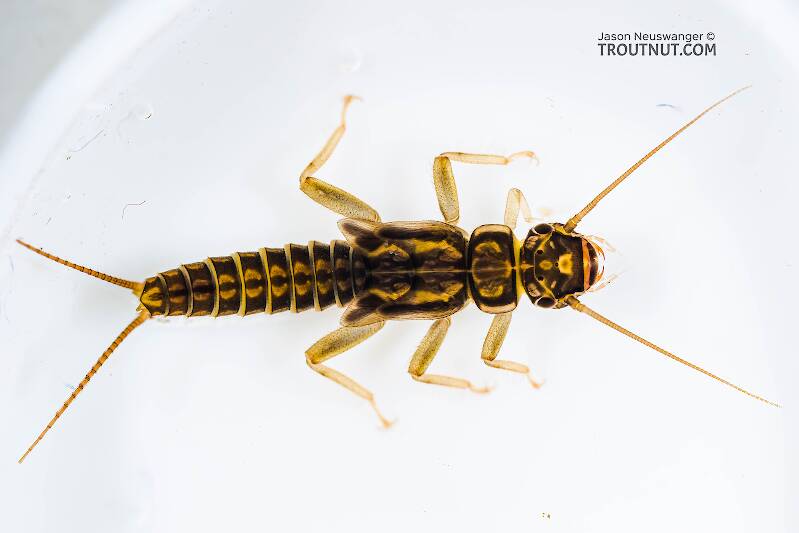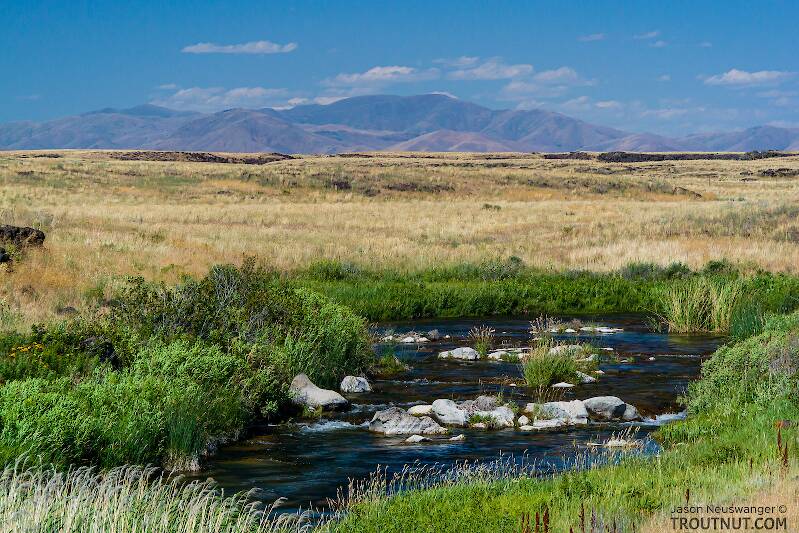
Salmonflies
Pteronarcys californica
The giant Salmonflies of the Western mountains are legendary for their proclivity to elicit consistent dry-fly action and ferocious strikes.
Featured on the forum


Troutnut is a project started in 2003 by salmonid ecologist Jason "Troutnut" Neuswanger to help anglers and
fly tyers unabashedly embrace the entomological side of the sport. Learn more about Troutnut or
support the project for an enhanced experience here.
Tiny Western Olives
Like most common names,"Tiny Western Olive" can refer to more than one taxon. For more detail click through to the scientific names.
Mayfly Species Plauditus punctiventris
These are pretty much always called Tiny Western Olives.
This species produces very strong hatches on fertile Western spring creeks. They are extremely small mayflies but may be extremely numerous.
Mayfly Species Apobaetis futilis
These are often called Tiny Western Olives.
This hind wingless little mayfly was formerly known as Pseudocloeon futile and can hatch in excellent numbers in certain western locales.
Mayfly Species Iswaeon anoka
These are sometimes called Tiny Western Olives.
This tiny hind-wingless Midwestern and Western species can produce excellent hatches because it is so extremely abundant. Its bright green duns are unmistakable. In the West they can also be an equally unmistakable bright almost fluorescent chartreuse, especially as nymphs. They are very common in the Northwest and Rocky Mountain states, with their population densities giving way to the similarly tiny and hind-wingless (though more somber colored) Acentrella species in Southern Oregon, California and the Southwest.
Iswaeon anoka was first brought to the attention of the angling community (as Pseudocloeon anoka) by famous angling author and columnist Joe Brooks. Back in the late 60's he wrote an article for Outdoor Life magazine extolling the work of Doug Swisher and Carl Richards in their forthcoming and groundbreaking book, Selective Trout. This species was featured as the model for their now famous version of the "No-Hackle" dry fly and imitative parachute patterns, sparking a revolution in fly design for hyper-selective trout. The rest as they say, is history...
Iswaeon anoka was first brought to the attention of the angling community (as Pseudocloeon anoka) by famous angling author and columnist Joe Brooks. Back in the late 60's he wrote an article for Outdoor Life magazine extolling the work of Doug Swisher and Carl Richards in their forthcoming and groundbreaking book, Selective Trout. This species was featured as the model for their now famous version of the "No-Hackle" dry fly and imitative parachute patterns, sparking a revolution in fly design for hyper-selective trout. The rest as they say, is history...

